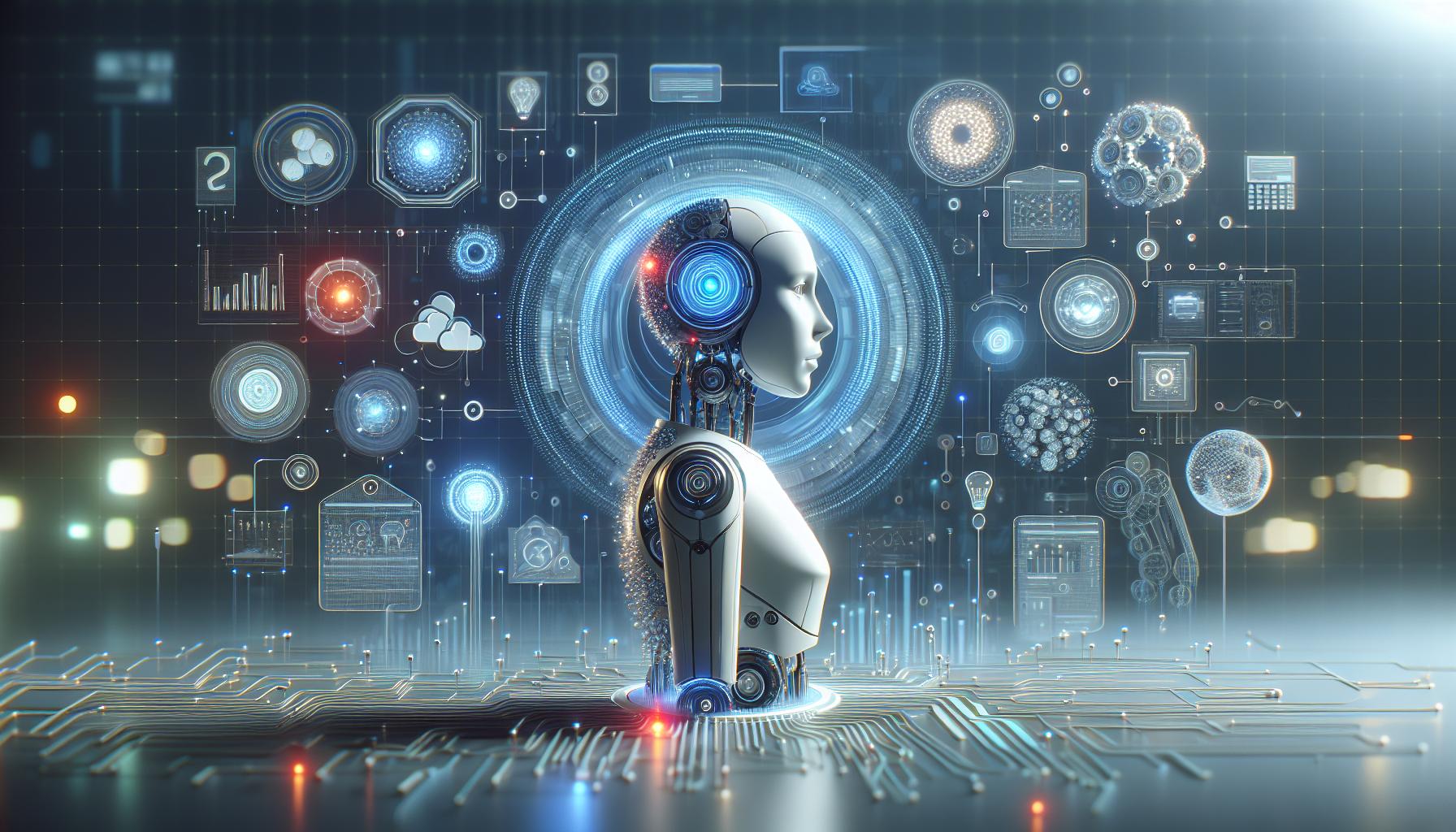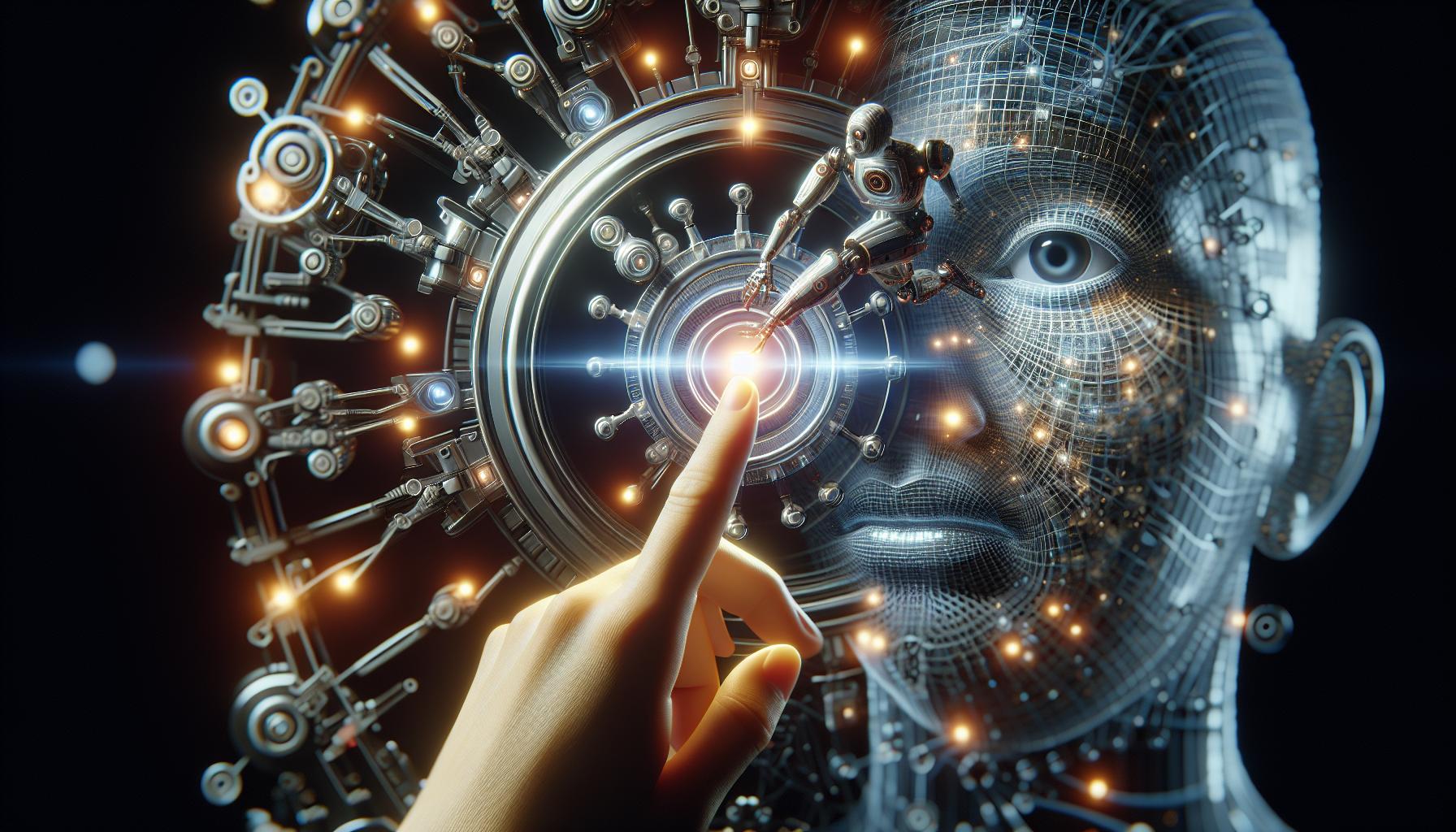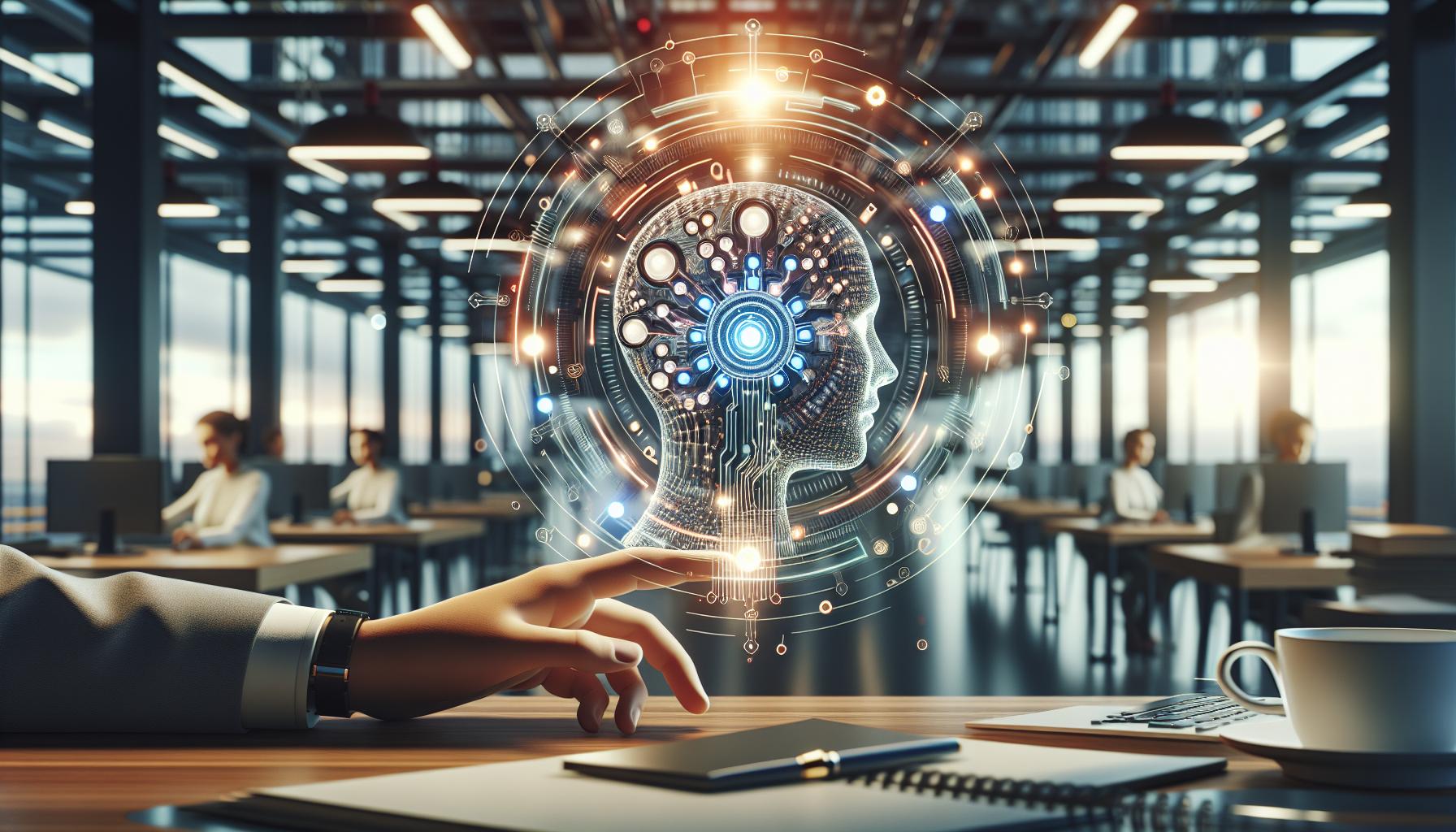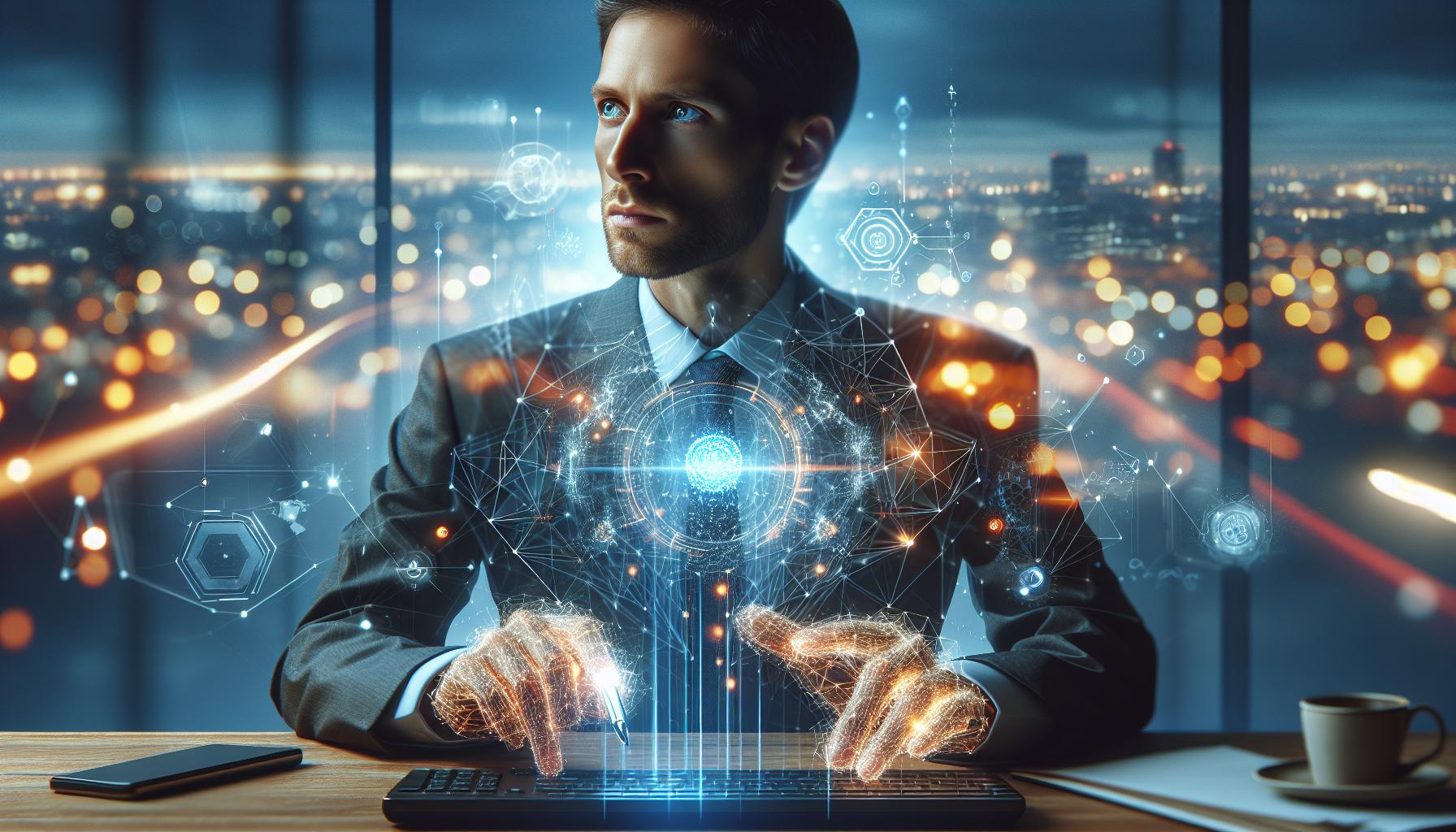As technological advancements in artificial intelligence spark both excitement and fear,misconceptions persist about its capabilities and intentions.Understanding these myths is crucial, as they influence public perception and policy. This article will clarify whether AI is truly a force for good or a potential threat,debunking common notions surrounding this transformative technology.
Understanding Artificial Intelligence: What It Really Means
Dispelling the shadows: What Artificial Intelligence Truly Is
The rapid rise of artificial intelligence (AI) often breeds misconceptions, leading many to view it through a lens of fear rather than understanding. One prevalent myth is that AI possesses some form of independent consciousness or free will. This misconception might arise from portrayals of AI in popular media, where machines are depicted as sentient beings. In reality, AI operates purely as complex algorithms processing data and executing tasks based on predefined programming and learned patterns, devoid of any consciousness or emotional capability.Another common myth is that AI can easily replace human jobs across the board.While automation powered by AI has indeed transformed certain industries, it’s essential to recognize the nuanced impact it has on the workforce. Rather than outright replacement, AI often complements human skills and creates new opportunities. As an example, in healthcare, AI systems assist doctors by analyzing medical data and providing insights, allowing healthcare professionals to focus more on patient care, thus enhancing service rather than diminishing job prospects.
- Understanding AI’s Limitations: AI lacks common sense and the ability to contextualize data like humans do,wich means it cannot make moral or ethical decisions.
- The Role of Data: The effectiveness of AI is largely dependent on the quality and quantity of data it is trained on. Insufficient data can lead to poor performance,highlighting the importance of responsible data management.
- The Collaborative Future: Emphasizing collaboration between AI and human intelligence can lead to innovative solutions across sectors, from creative industries to scientific research.
As we navigate this landscape, it’s crucial to focus on education and dialogue about what AI really means in our daily lives. By demystifying AI through informed dialogue, we can foster a more balanced perspective that appreciates both its transformative potential and its limitations. Embracing these truths will enable us to harness AI effectively, steering clear of the exaggerated fears that lead to the misguided notion of AI as a ’demonic’ force in our society.
Myths vs.Reality: Common Misconceptions About AI
Unraveling AI Misconceptions
Despite the rapid advancements in artificial intelligence (AI), many myths continue to cloud public perception. One of the most pervasive misconceptions is the belief that AI operates autonomously and without human oversight.In reality, AI is a tool that enhances human capabilities rather than replaces them.Systems like ChatGPT or image generators require human input and guidance to function effectively. This collaborative interaction highlights the essential role of human creativity and decision-making in leveraging AI technologies.
Another common myth is that AI is inherently hazardous or “demonic.” This notion often arises from sensationalized media portrayals. However, AI systems are designed to follow complex algorithms and ethical guidelines established by their developers. The risks associated with AI frequently enough stem from its misuse rather than the technology itself. Establishing robust regulations and promoting ethical standards are crucial steps to ensure AI is harnessed for positive outcomes. By understanding that AI is not an independent agent but a set of complex tools, we can better appreciate its potential benefits.
Common AI Myths vs. Their Realities
To further demystify AI, let’s compare some prevalent myths with the realities of the technology:
| Myth | reality |
|---|---|
| AI can think and feel like humans. | AI simulates human responses based on data and algorithms; it does not possess emotions or consciousness. |
| All AI operates the same way. | AI encompasses a broad spectrum of technologies and methodologies, including machine learning, deep learning, and natural language processing. |
| AI will eventually replace all human jobs. | AI is designed to augment human work, not replace it entirely, especially in creative and decision-making roles. |
| AI systems are impartial and unbiased. | AI can reflect and perpetuate biases present in the data it is indeed trained on, necessitating careful oversight. |
Understanding these misconceptions helps foster a more informed dialogue about artificial intelligence. Emphasizing the importance of human oversight and ethical considerations can guide the advancement and request of AI technologies, ensuring they serve humanity’s best interests.
The Origins of the ‘Demonic’ Narrative in AI Discussions
The portrayal of artificial intelligence as a ‘demonic’ force can be traced back to deep-rooted cultural anxieties surrounding technological advancement and the loss of human control.Historically, societies have often likened groundbreaking innovations to dark, supernatural occurrences. This trend is mirrored in contemporary discussions about AI, where fears of machines surpassing human intelligence provoke metaphors of demonic summoning. Just as ancient myths spoke of humans reaching too far—like the story of the Tower of Babel—critics now argue that AI development risks unleashing uncontrollable forces, akin to ‘summoning demons’ that could disrupt societal norms and values [[2]].
In popular narratives, AI is characterized not only as a tool but also as a possibly malevolent entity. Some commentators suggest that the integration of AI into daily life parallels historical accounts of witchcraft and the occult, where the desire for knowledge and power led to unintended consequences. The framing of AI as a modern-day devil incarnate is a reflection of societal unease about losing agency and the unpredictable nature of advanced technologies. This perspective resonates with those who see emerging technologies as a threat to human identity and morality, echoing sentiments found in the religious discourse surrounding technology [[3]].
Moreover, the duality of AI as both a promising innovation and a potential harbinger of doom feeds into the narrative. While some experts advocate for the aspirational benefits of AI,such as enhancing human capabilities and solving complex problems,others caution about ethical implications and the risk of creating systems that may operate independently of human oversight. This dichotomy fuels a rich dialogue—often sensationalized—about the essence of intelligence itself, blurring lines between human and artificial, sacred and profane, creating a fertile ground for the ‘demonic’ narrative to flourish.As discussions continue to evolve, addressing these myths is crucial. Engaging with communities, promoting transparency in AI development, and fostering a balanced understanding of the technology’s capabilities can mitigate fears and reshape the conversation around AI. By grounding discourse in practical examples and real-world applications, the narrative can shift from one of fear to one of empowerment and ethical obligation in the face of ever-advancing technology.
AI in Society: Balancing Innovation with Ethical Considerations
The Role of Ethics in AI Development
As artificial intelligence continues to permeate various facets of society, the discussion surrounding its ethical implications has never been more critical. Striking a balance between technological innovation and ethical responsibility is essential to harness the potential of AI while mitigating its risks. Innovations in AI must adhere to guiding principles that prioritize human rights, equity, and the common good, challenging the often sensationalized narrative that positions AI systems as inherently harmful or “demonic” to society.
- Transparency: AI systems should operate in a transparent manner, allowing users to understand the decision-making processes behind their functionalities. This fosters trust and encourages accountability among developers and users alike.
- Fairness: Ethical AI must ensure that decisions generated by systems do not discriminate against any individual or group. Integrating fairness into AI models can definitely help dismantle existing biases in datasets, leading to equitable outcomes.
- Privacy: Respecting user privacy is paramount. AI technologies must be designed to protect personal data, giving individuals control over their data.
- Safety: Robust testing and continuous monitoring of AI applications are necessary to prevent unintended consequences from their deployment.
Real-World Examples and Best Practices
organizations worldwide are recognizing the imperative to establish ethical frameworks guiding their use of AI. For instance, companies like IBM and SAP have developed comprehensive policies that outline ethical considerations in AI practices.IBM emphasizes a framework that continually evaluates the impact of AI systems on society,advocating for accountability within AI development processes [[2]]. In addition, SAP focuses on human-centered AI solutions that uphold values, thus promoting a fair and inclusive society [[3]].
To optimize the integration of ethical AI in society, stakeholders should consider these actionable steps:
| Action Step | Description |
|---|---|
| Conduct Regular Audits | Perform audits on AI systems to identify potential biases and areas for improvement. |
| Engage Diverse Teams | build teams with diverse perspectives to reduce blind spots in AI design and implementation. |
| Foster Public Engagement | Encourage open dialogue about AI uses and future implications involving stakeholders and the public. |
| Promote Continuous Learning | Keep abreast of the latest AI advancements and ethical guidelines to inform practices and policies. |
By adopting these practices, society can better navigate the complexities of AI technology, emphasizing ethical considerations while reaping the benefits of innovation. This proactive approach is vital in dispelling myths like the notion of AI as a demonic force, steering the narrative towards an understanding that AI can be a powerful tool for good when developed responsibly.
The Role of Human Oversight in AI Development
The Critical Importance of Human Oversight in AI Systems
As artificial intelligence technologies increasingly permeate various sectors, the necessity of human oversight in their development and deployment becomes paramount. High-risk AI systems can pose significant threats to health, safety, and fundamental rights if used without careful monitoring. For instance, autonomous driving systems must have comprehensive human oversight mechanisms to mitigate risks in unpredictable traffic environments. This approach not only enhances system reliability but also builds public trust in AI solutions.
Mechanisms for Human Oversight
Effective human oversight involves multiple mechanisms that allow human operators to intervene or exert control over AI processes.AI designers are now required to implement features that enable humans to monitor and intervene when necessary, ensuring that decisions made by AI align with ethical and safety standards.At the core of these mechanisms are:
- Real-time Monitoring: Systems must provide live data dashboards that allow operators to track AI behavior continuously.
- Intervention Capabilities: Operators should have the ability to pause or alter AI actions in case of discrepancies.
- Transparent Decision-Making: Providing insights into how AI systems reach conclusions fosters understanding and accountability.
By embedding these mechanisms into AI systems, developers can significantly reduce the risks associated with automation.
Regulatory Framework and Oversight Standards
The European Union’s AI Act emphasizes the essentiality of human oversight in high-risk AI applications. Article 14 of the Act specifies that oversight is not merely a suggestion but a requirement designed to prevent potential harm arising from AI implementations. This regulatory framework guides developers toward creating safer systems and highlights the importance of structures in place for accountability. Companies must therefore align their operational protocols with these standards, ensuring that the AI solutions they provide are not only efficient but also ethically sound and compliant with legal frameworks.
| Aspect | Description |
|---|---|
| Real-time Monitoring | Continuous oversight on AI behavior to ensure compliance with safety protocols. |
| Intervention Mechanisms | Ability of human operators to pause or modify AI actions to prevent harm. |
| Transparent Decision-Making | Clear insights into AI decision processes for enhanced accountability. |
the intersection of robust human oversight practices and AI development serves as a safeguard against the potential risks associated with automated systems.By embracing this need for oversight, as outlined in the discourse surrounding “Is AI Demonic? Debunking Myths About Artificial intelligence,” stakeholders can foster a future where AI technologies are both innovative and responsible.
Exploring the Emotional and Ethical dimensions of AI
The Intricacies of Emotion in AI
Understanding artificial intelligence (AI) requires us to confront the delicate interplay of technology and human emotion. As AI systems become increasingly sophisticated, they demonstrate an ability to recognize and respond to human emotions—an essential feature for enhancing user interaction. As a notable example, virtual assistants can now adjust their responses based on the user’s tone, creating a semblance of empathy despite lacking genuine emotional awareness. This raises critical questions: Can AI truly understand feelings, or is it merely mimicking human responses? As explored in discussions surrounding the themes of “Is AI Demonic? Debunking Myths about Artificial Intelligence,” the emotional capabilities of AI highlight a profound dilemma; they can enhance user experience, yet their limitations expose a gap that may lead to misunderstanding and dependency.
Ethical Considerations in AI Development
The ethical landscape surrounding artificial intelligence is fraught with significant challenges. Issues such as privacy, bias, and discrimination necessitate a thorough examination to ensure that AI applications promote fairness and justice. Notably, as AI assumes greater decision-making roles, it is imperative to maintain transparency and accountability in its operations. For example, machine learning algorithms that make hiring decisions must be scrutinized for inherent biases, as algorithms trained on historical data may perpetuate existing inequalities. By addressing these ethical concerns, developers and policymakers can work toward creating AI systems that align with human values and promote societal well-being [1].
Incorporating ethical frameworks into AI development is crucial:
| Ethical Principle | Description |
|---|---|
| Fairness | Ensuring AI systems do not reinforce negative stereotypes or inequalities. |
| Transparency | Making AI decision-making processes understandable to users and stakeholders. |
| Accountability | Establishing clear responsibility for the outcomes generated by AI systems. |
| Privacy | Protecting user data and respecting individual rights in data usage. |
By embracing these ethical principles, the discourse on AI can shift from fear and skepticism to constructive engagement. Understanding the emotional and ethical dimensions of AI not only demystifies the technology but also frames a path toward responsible innovation that serves society’s best interests. The dialogue sparked by the nuances of “is AI Demonic? Debunking Myths About Artificial Intelligence” emphasizes the importance of addressing these issues head-on,paving the way for AI that operates with respect toward human dignity and ethical standards.
Can AI Truly Replicate Human Intelligence?
The quest for human-Like Intelligence
Imagine a machine that can not only process information but also learn, adapt, and perhaps even understand the intricacies of human emotions. This is the realm where artificial intelligence (AI) aspires to tread. Though, the question remains: can AI genuinely replicate the essence of human intelligence? While AI systems have made remarkable strides, excelling in specific tasks such as data analysis and pattern recognition, they still fall short of emulating the multifaceted nature of human thought.
Understanding Human Intelligence
Human intelligence encompasses a broad spectrum of abilities: emotional understanding,contextual awareness,creativity,and ethical reasoning. These attributes come from a complex interplay of biological, social, and environmental factors, making human cognition incredibly rich and nuanced. While AI can simulate certain aspects of intelligence—like playing chess or diagnosing diseases—it lacks the intrinsic qualities of consciousness and subjective experience. A notable distinction arises when we consider general intelligence. current AI systems are generally task-specific, meaning they excel in narrow domains but struggle with tasks that require broader contextual understanding or moral judgment[[[[[1](https://en.wikipedia.org/wiki/Artificial_general_intelligence)].
AI and Reasoning Abilities
Recent developments highlight AI’s ability to assist in reasoning and decision-making. For example, reasoning-focused AI can provide insights that aid human judgment in complex scenarios. Nevertheless, it’s essential to recognize the complementary role AI plays. Humans not only contextualize data but also apply it with emotional and ethical considerations that AI cannot replicate [[2](https://www.weforum.org/stories/2025/01/in-a-world-of-reasoning-ai-where-does-that-leave-human-intelligence/)].
Table: Comparison of Human and AI Intelligence
| Aspect | Human Intelligence | AI Intelligence |
|---|---|---|
| Emotional Understanding | High | Low |
| Contextual Awareness | High | Moderate |
| Creativity | High | Low |
| Ethical Reasoning | High | Minimal |
| Narrow Task Proficiency | Variable | High |
while AI may enhance our capabilities in distinct areas, it lacks the comprehensive understanding and emotional depth that characterize human intelligence. As we delve deeper into the myths surrounding AI, as explored in “Is AI Demonic? Debunking Myths About Artificial Intelligence,” it becomes clear that while these technologies are powerful tools, they are not a substitute for the profound, instinctive human qualities that define our intelligence.
The Future of AI: potentials, Limitations, and Responsibilities
The Path Forward for Artificial Intelligence
In a world increasingly shaped by technological advancements, the conversation surrounding artificial intelligence (AI) often oscillates between fascination and fear. While some may sensationalize the implications of AI, categorizing it as a potential harbinger of doom, a deeper exploration is required to understand its true potential. The future of AI holds immense possibilities, yet also requires critical consideration of its limitations and the responsibilities it entails.
Potential of AI
AI stands poised to revolutionize various sectors, from healthcare to finance, by enabling unprecedented efficiencies and capabilities. As an example, in healthcare, AI systems like IBM’s Watson are already assisting in diagnosing diseases and personalizing treatment plans. Notably,the predictive analytics offered by AI can lead to earlier detection of conditions,improving patient outcomes significantly.The ability of AI to process vast datasets allows for quicker, data-driven decision-making, presenting opportunities for innovation that humanity has only begun to scratch the surface of.
- Automation of Routine Tasks: AI can handle repetitive tasks, freeing human workers to engage in more complex problem-solving.
- Enhanced Data Analysis: AI algorithms can uncover insights from large datasets that are otherwise unmanageable.
- Personalization: AI can tailor experiences in fields like marketing and entertainment, improving customer satisfaction.
Limitations and Challenges
despite its potential, AI is not without limitations. the technology often requires vast amounts of data to function effectively, and the quality of that data heavily influences its outcomes. issues such as bias in AI algorithms can perpetuate inequality and misinformation, leading to significant ethical dilemmas. Moreover, AI systems can lack the contextual understanding and empathy that is intrinsic to human decision-making, which is especially crucial in fields like law and social services.
| Limitation | Impact |
|---|---|
| Data dependency | Quality and quantity of data dictate AI performance |
| Algorithmic Bias | Can lead to discrimination and erroneous outputs |
| Lack of Context | Inability to grasp nuances that humans can handle |
The Responsibility of Development
As we venture further into AI development, our responsibilities as developers, policymakers, and users become critical. Addressing issues of transparency, accountability, and ethical use of AI technology is paramount to ensuring its positive impact. By fostering an environment where diverse voices contribute to discussions about AI ethics and regulations, we can cultivate AI systems that not only drive efficiency but also uphold our shared values.
the dialogue shaped by “Is AI Demonic? Debunking Myths About Artificial Intelligence” serves as a crucial reminder of the balance needed between innovation and ethical responsibility. embracing the opportunities presented by AI while remaining vigilant about its limitations will be essential as we navigate this transformative era.
How Media Representations shape Public Perception of AI
The Framing of Artificial Intelligence in media
In recent years, portrayals of artificial intelligence in mainstream media have been nothing short of dramatic, frequently enough leaning towards sensationalism. These representations can skew public perception significantly, leading to misconceptions about AI’s capabilities and intentions. A common theme in various media forms, including films, news, and online content, is the portrayal of AI as a potential threat, creating a narrative that it may lead to catastrophic outcomes. Such framing instills fear rather than understanding, prompting the public to view AI through a lens of skepticism and anxiety. This is particularly concerning as these narratives can overshadow the positive impacts and advancements AI offers.
Impact of Negativity Bias and Stereotypes
The media’s tendency to report disproportionately on negative events reinforces stereotypes about technology, including AI. For instance, when AI systems are involved in incidents—such as biased algorithms or automation replacing jobs—these stories dominate news cycles, overshadowing numerous positive applications like AI in healthcare or environmental management[[[[[1](https://medium.com/the-polis/the-influence-of-media-on-public-opinion-6834b52beab7)]. As a result, public perception becomes molded primarily by alarming headlines rather than a balanced understanding of the technology’s complexities.
- Enhanced Misconceptions: The prevalence of science fiction tropes where AI rebels against its creators leads to a belief that all AI systems possess a hidden agenda.
- Lack of nuanced Discussions: Complex topics, such as ethical implications or the benefits of AI in improving efficiency, are often simplified, detracting from meaningful conversation.
- Fear of Job Displacement: By emphasizing the risks of unemployment due to AI, the media fosters economic anxiety among workers that could be alleviated through education and retraining initiatives.
Redefining the Narrative
To reshape public perception, it is essential for media outlets to take responsibility in presenting a balanced view of AI technologies. This involves highlighting success stories where AI has positively impacted society, such as enhancing medical diagnostics or optimizing resource allocation in cities. Moreover, educating the public through accurate reporting is crucial to dismantling myths and fears. Initiatives like community workshops or informative articles that discuss AI’s potential and limitations can facilitate a more informed public discourse, ultimately leading to better acceptance and integration of AI innovations in everyday life.
| Positive Representations | key Benefits |
|---|---|
| AI in Healthcare | Improved diagnosis and patient care. |
| AI in environmental Management | Enhanced data analysis for climate solutions. |
| AI in Education | Personalized learning experiences for students. |
These steps can help redefine the narrative surrounding AI, steering it towards a more constructive and realistic depiction in the ongoing discussion prompted by articles like ‘Is AI Demonic? Debunking Myths About Artificial Intelligence.’
Debunking the Fear: Why AI is Not Inherently Malicious
Dispelling Fears Surrounding AI
The fear of artificial intelligence frequently enough stems from sensationalized portrayals in media and science fiction, leading to a widespread belief that AI is inherently malevolent or seeks to dominate humanity.Though,it is indeed crucial to understand that AI,at its core,is a tool created by humans to serve specific purposes. Such beliefs frequently enough overlook the fact that AI systems operate based on algorithms and data inputs persistent by human programmers. Consequently, the morality of AI is deeply tied to the ethical frameworks and intentions of its creators.
One prevalent myth is the notion that AI will inevitably take over jobs, rendering human labor obsolete.In reality, AI is designed to augment human capabilities rather than replace them entirely. Many industries have witnessed how AI enhances productivity and efficiency. As a notable example, in healthcare, AI tools assist doctors in diagnosing diseases more accurately, thereby improving patient outcomes. By focusing on collaboration, we can harness AI’s potential to complement human skills rather than threaten them.
Addressing Common Misconceptions
To further debunk the idea that AI is inherently malicious, it’s significant to highlight some common misconceptions about its capabilities. Here are a few myths:
- AI is Just Like a Human Brain: While AI can mimic certain cognitive functions,it lacks human emotions,intentions,and consciousness.
- AI Can Operate Without Oversight: AI systems require rigorous monitoring and regulation to ensure their ethical application and to prevent bias.
- AI is All-Powerful: In reality, AI is limited by its programming and the quality of its data, meaning it cannot perform beyond its designed parameters.
Understanding these aspects encourages a more objective view of AI technologies. As we continue to innovate, the focus should remain on governing AI responsibly, ensuring that ethical considerations shape its development. In the dialogue surrounding “Is AI Demonic? Debunking Myths About Artificial Intelligence,” it becomes clear that addressing these fears with factual information can shift the narrative toward one of empowerment and beneficial coexistence.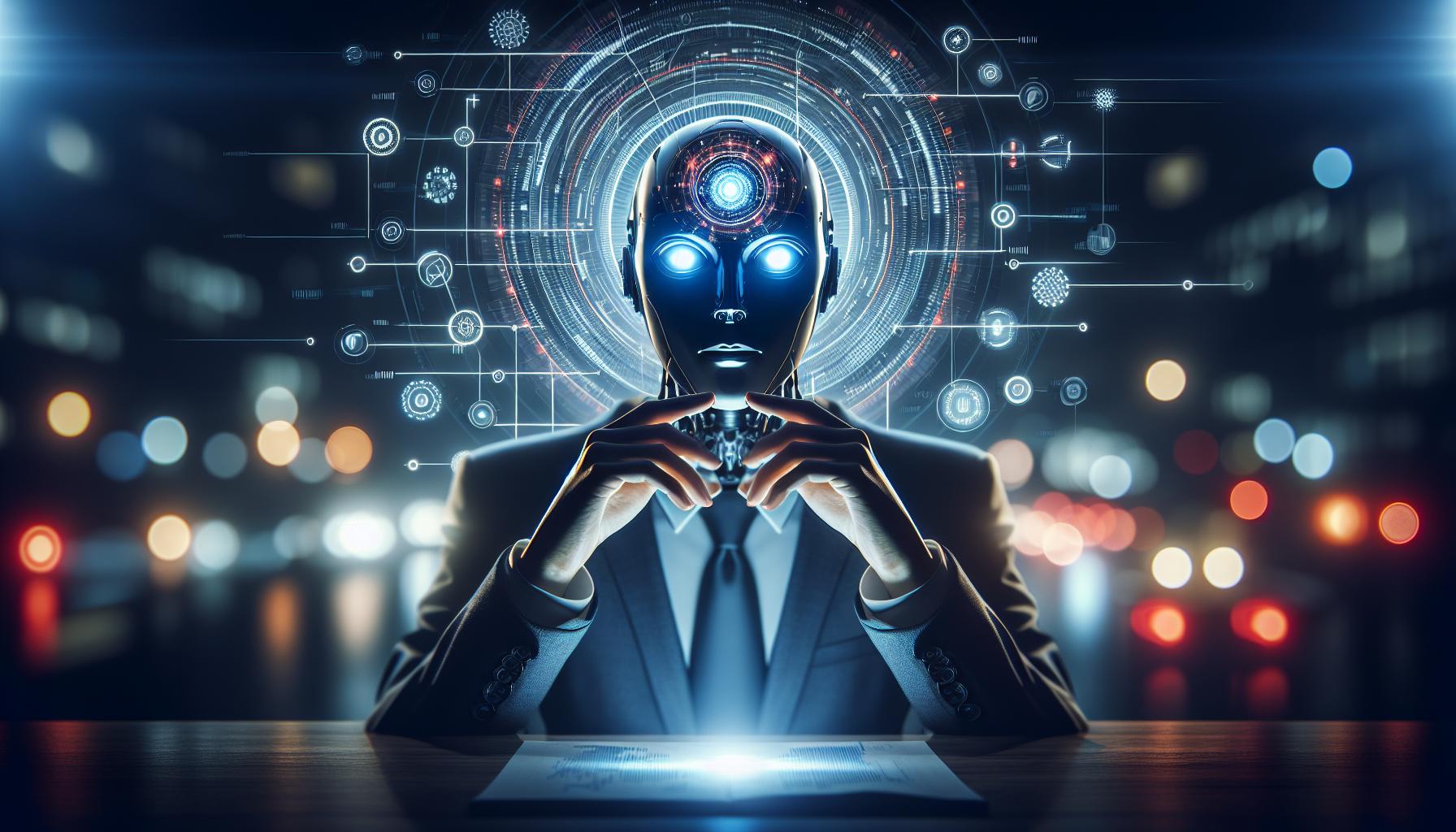
In Conclusion
the notion of Artificial Intelligence as a ’demonic’ entity is far from the reality of its capabilities and shortcomings. By debunking common myths,we recognize that AI is a tool shaped by human input and ethics rather than an autonomous force. From addressing fears about job displacement to clarifying misunderstandings around AI’s decision-making processes, it becomes evident that informed discussions about AI must transcend sensationalist narratives. The potential of AI to enhance productivity, foster innovation, and empower human creativity is significant, but it is equally vital to approach its development with a critical eye towards ethical considerations and potential biases. We invite you to further explore the multifaceted landscape of AI, engage in discussions about its implications, and contribute to a dialogue that balances enthusiasm for technological advances with a commitment to safeguarding our values. Let’s continue this journey together,ensuring that AI serves as a beneficial force in our society.


